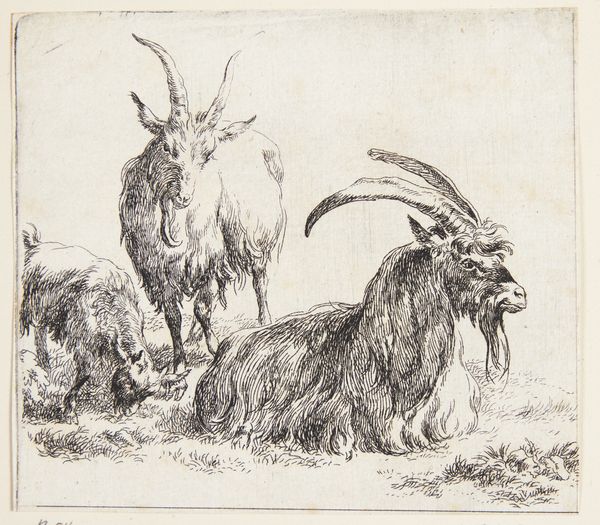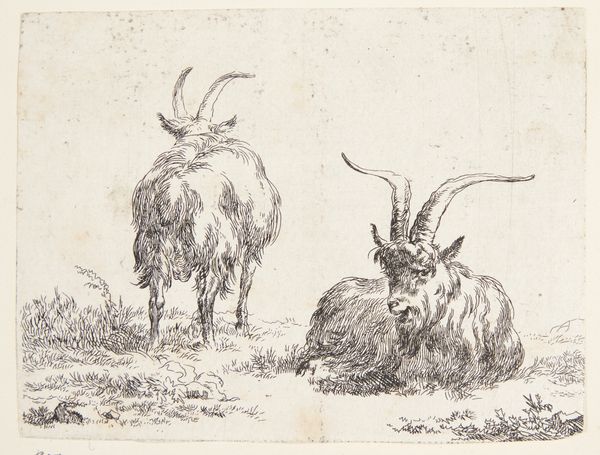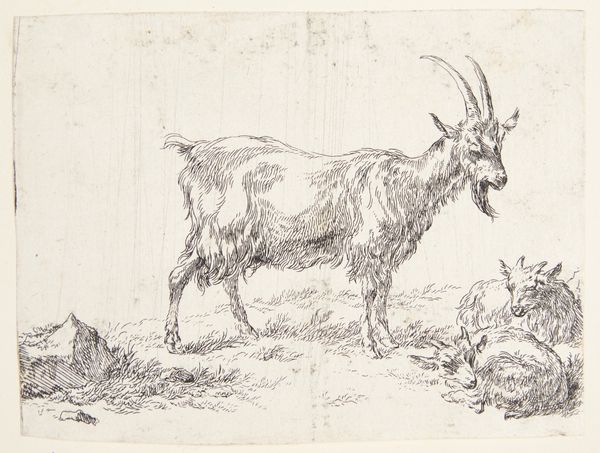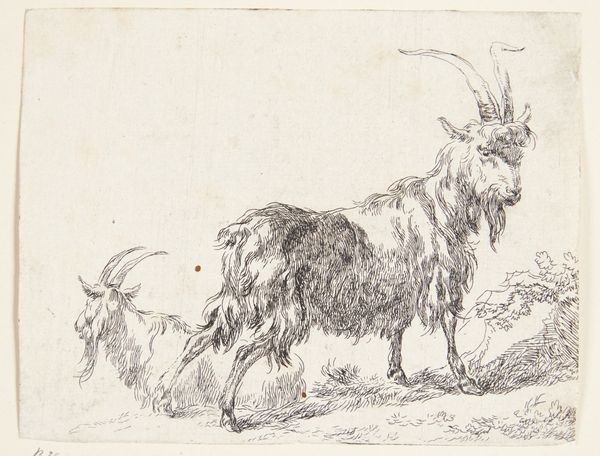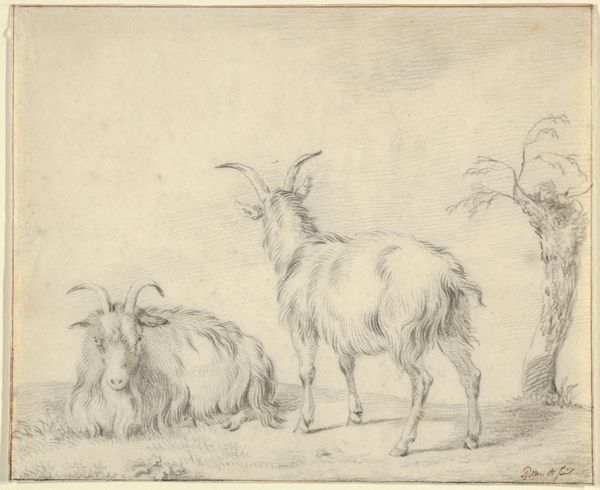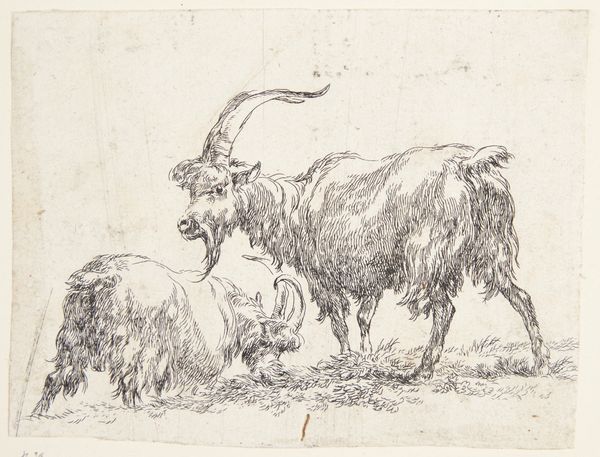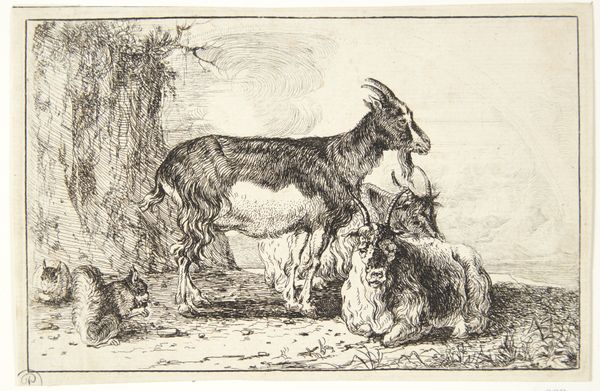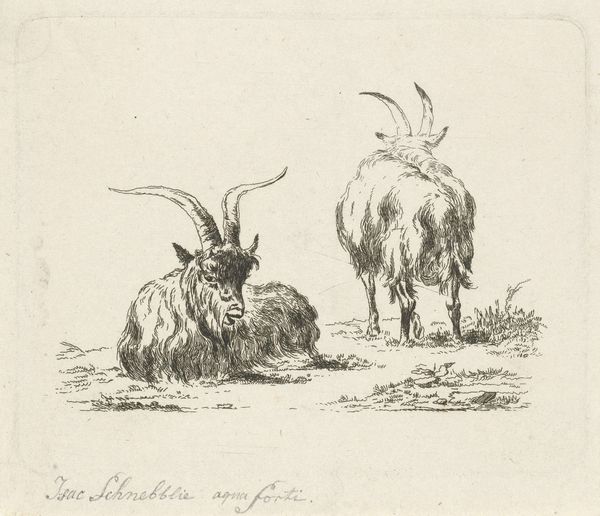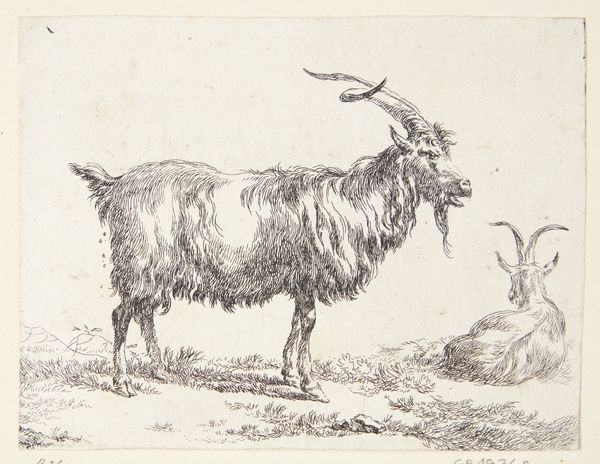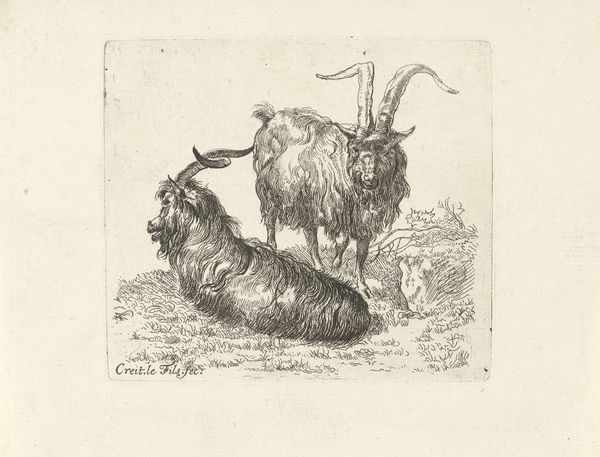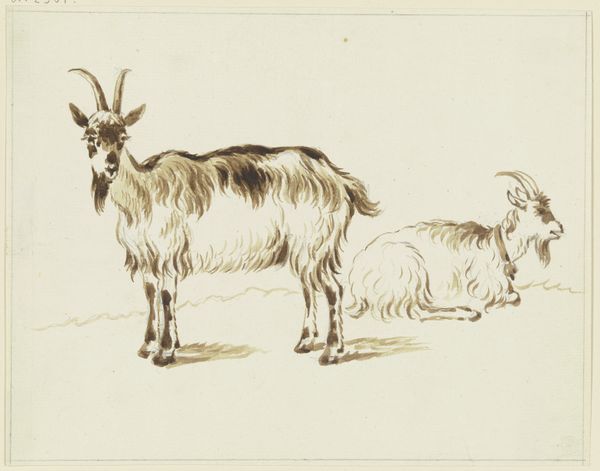
drawing, print, etching, ink
#
drawing
#
baroque
#
animal
# print
#
etching
#
landscape
#
ink
#
genre-painting
Dimensions: 97 mm (height) x 111 mm (width) (bladmaal)
Curator: Nicolaes Berchem’s "To geder og et kid," which roughly translates to “Two Goats and a Kid," executed sometime between 1620 and 1683, using etching and ink. Look at the textures achieved. What are your immediate impressions? Editor: It's charming. Domestic, pastoral. But the way the etching defines the musculature beneath the goats' coats also hints at the realities of animal husbandry—of use. I am curious about it’s place in art history as it reflects human relationships to the animal world at that time. Curator: The strength lies in the line work, don't you think? Note how the varying densities create depth, subtly distinguishing each animal and grounding them within the minimal landscape. It adheres to established artistic theories on proportion and representation within genre painting. Editor: Right, and that landscape - hardly idealized. These are working animals in a scrubby field. Considering Berchem’s prolific output of pastoral scenes, I wonder, did his work reflect an escape to nature amidst an era dominated by courtly extravagance or serve as propaganda highlighting land ownership and rural economies? And how might that be tied to the emerging capitalistic landscape? Curator: While socio-economic factors always resonate, consider the artistic choices Berchem made. The light catches the central goat’s fur, drawing our eye through a series of precise formal decisions about how light renders form. Note the way the goat appears calm, almost regal with the contrast that defines the animal, and the horns with sweeping curve and depth. This is an important artistic consideration within Baroque landscapes. Editor: That ‘regal’ stillness may hint at its symbolism within the work, given the cultural meanings assigned to goats—associations with fertility, stubbornness, but also sacrifice. Are we invited to see in this common scene a reflection on labor, ownership, even divine order? Curator: Perhaps we can simply acknowledge its remarkable synthesis of observation and technique. Its capacity to portray the individuality and physical substance within the chosen genre speaks for itself, offering unique insight for scholars today who analyze form in great detail. Editor: And by examining both form and the sociohistorical contexts surrounding this etching, we not only recognize Berchem's mastery but open avenues to broader discussions on how art reflects and shapes our understanding of the world around us.
Comments
No comments
Be the first to comment and join the conversation on the ultimate creative platform.
